How to Choose Plants

Choosing plants for ease of maintenance
Do you want to grow healthy plants with a minimum of effort? You can improve your success in the garden by choosing plants that are adaptable to our growing conditions. As well as those that are less susceptible to damage from insects and diseases. Choose plants with their preferred exposure in mind and group plants with similar moisture requirements together and you will improve plant health. Choose plants for the “bones” of your garden with hardiness and adaptability in mind and your garden will flourish and improve as the years go by.
Weather hardiness
Winter hardiness measures the ability of a plant to survive our harsh prairie winters. It’s only logical that the trees, shrubs and perennials that are native to our area would best adapt to the climate here. As a result , would in many cases have an important role to play in our gardens. Viburnums such as highbush cranberry and nannyberry, along with saskatoons, green ash, showy mountain ash, American basswood and redosier dogwood are examples of native plants that we commonly use to good effect.
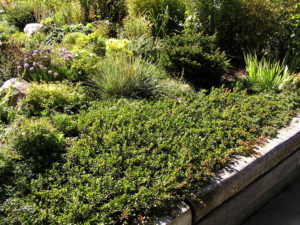
Settlers of European origin longed for plants from their native lands. Institutions and individuals have for over a century applied themselves to developing varieties reminiscent of familiar European garden plants, and from the many trials and breeding experiments we have a palette of plants that will survive our difficult winters. These plants derived hardiness from native North American species and from species originating in similar cold continental climates. They picked up showy characteristics from tender but attractive garden plants.
Disease resistance
The first challenge in testing and developing new plant varieties was to find plants that would survive our harsh climate. But as such varieties increase in number the focus shifts to finding plants that are resistant to diseases and insects. There has been some success, but breeders still need to continue work to keep up with shifting problems. Thunderchild rosybloom crabapple, for example, became prominent due to its resistance to fireblight, a bacterial disease. But then, it can get apple scab, a fungal disease that causes defoliation. Now nursery workers are likely to recommend ‘Gladiator’, a newer plant that’s resistant to both diseases.
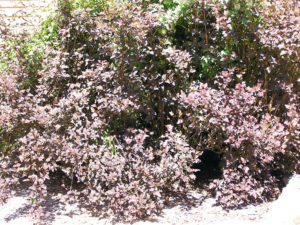
American basswood is a beautiful large native tree you will usually find along residential boulevards. It is often attacked by eriophyte mites that cause little bumps on the leaves. Although these mites don’t do major damage to the tree, some people find them unsightly, and municipalities could turn instead to a plant like like Dropmore linden, a hybrid that is immune to attack by these mites.
Growing conditions
Soil
In evaluating a site for planting, gardeners need to consider the soil, drainage and sun exposure in order to choose plants that adapt well. Prairie soils vary from clay to sand with textures in between. Sandy soils drain fast and tend to dry out quickly. Plants that thrive in such conditions are described as drought tolerant. For example, Japanese barberry varieties, ninebark varieties and junipers are well adapted to droughty well-drained soils. Where clay predominates moisture loving plants are best adapted. On very moist sites the gardener should plant chokeberry, redosier or Siberian dogwood, green ash or willow species. Group plants according to their moisture needs so you can tailor growing conditions to the needs of the group.
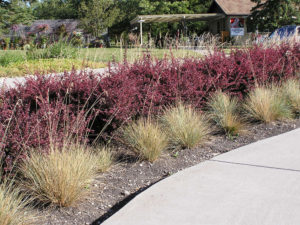
Soil conditions such as acidity or alkalinity, salinity and fertility can affect plants. Most plants that we grow in prairie gardens will tolerate soil that ranges from slightly acid to somewhat alkaline (the common condition). If the soil is very acidic, the gardener’s choice is more limited. Saline soil presents difficulties and only salt tolerant plants will thrive. A saline condition happens when they put salk on streets for ice removal. Trees and shrubs that are highly salt tolerant are American and Siberian elm, false indigo bush, Japanese barberry, smooth sumac, and Ural false spirea. Manitoba maple, green ash and Japanese elm are moderately salt tolerant.
Sun
New yards are often open and sunny. Many varieties of trees and shrubs will grow in full sun as long as competition from grass and other aggressive plants is controlled. In more established landscapes there are often shady areas that present a challenge. In a shady under-storey, plant burning bushes, bearberry or creeping juniper as ground cover, and viburnums, dogwoods, cotoneaster and caraganas as taller shrubs. Spruce trees, mountain ash, American basswood and hop hornbeam will grow well in the shade.
When you select plants to form the bones of your garden you will want to choose trees and shrubs that are winter hardy, adapted to its particular growing conditions and resistant to common diseases and damaging insects. You will have a garden where plants thrive, therefore, as a true bonus, have more time to enjoy the results of your labour.
By Hugh Skinner

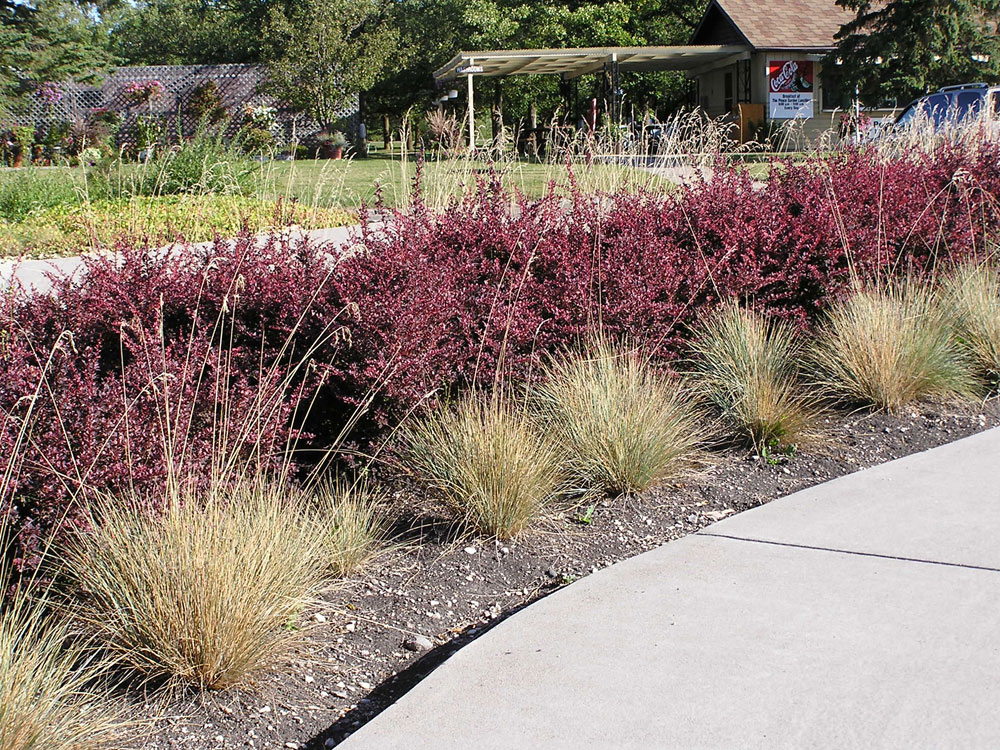
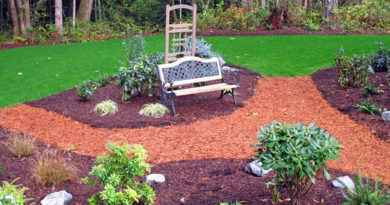


Pingback: Plant Combination Guide - Canada's LOCAL Gardener magazine